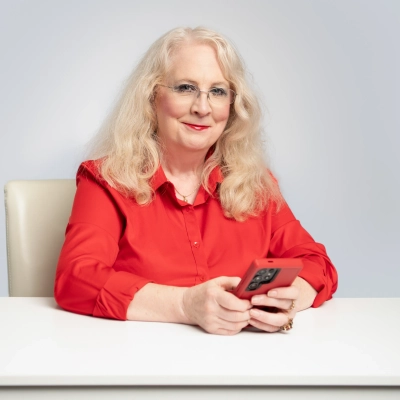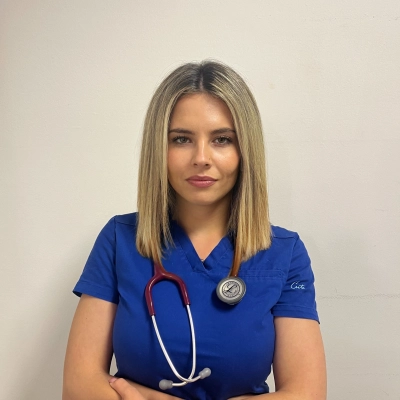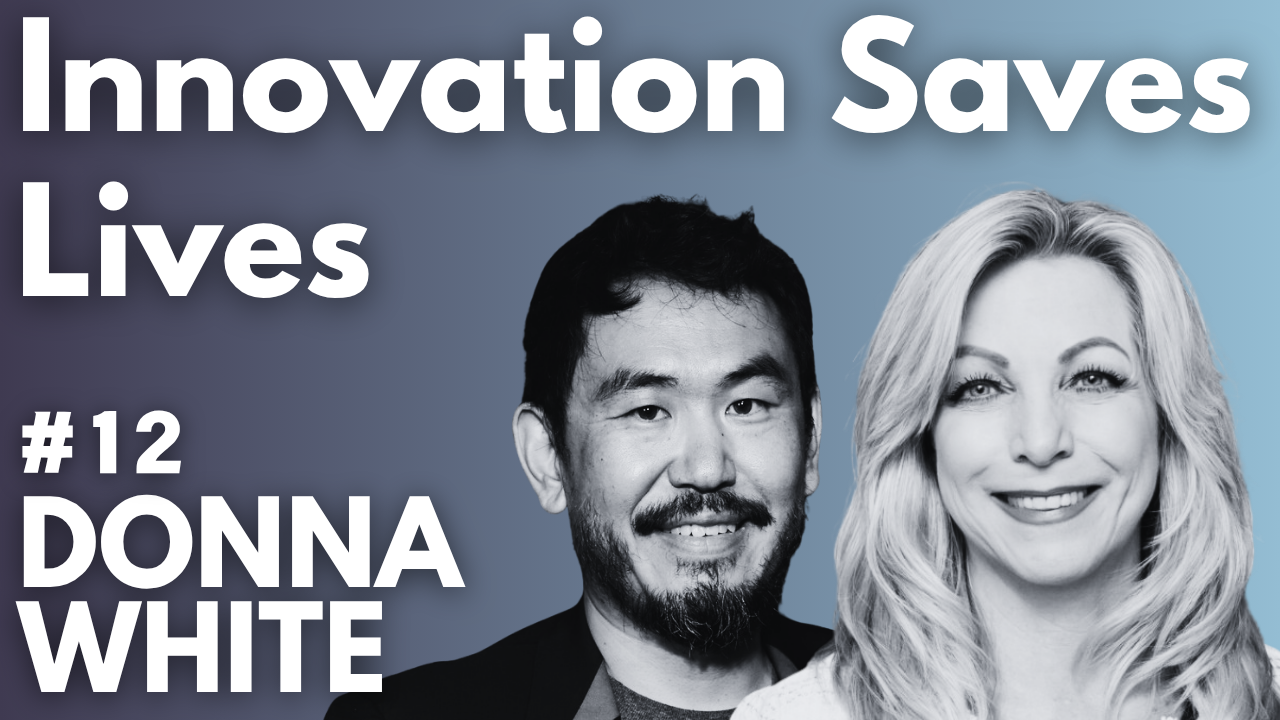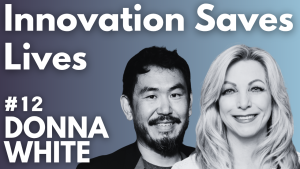Digital health solutions are revolutionizing healthcare for patients with disabilities. This article explores innovative approaches, from AI-powered fertility care to screen-reader-friendly telehealth, drawing on insights from leading experts in the field. Discover how these cutting-edge technologies are breaking down barriers and improving accessibility in healthcare for individuals with diverse needs.
- AI-Powered Fertility Care for Mobility Challenges
- Asynchronous Tools Enhance Patient Communication
- Remote Symptom Tracking Improves Personalized Care
- Wearables Reduce Barriers for Disabled Patients
- Digital Health Personalizes Pain and Fertility Management
- Video Modules Empower Patients with Disabilities
- Plain Language Content Enhances Healthcare Accessibility
- Home-Based Digital Rehab Plans Aid Recovery
- AI-Assisted Journaling Supports Neurodivergent Patients
- Passive Check-In System Ensures Safety
- Screen-Reader-Friendly Telehealth Empowers Visually Impaired
- Digital Platforms Boost Stroke Recovery Engagement
AI-Powered Fertility Care for Mobility Challenges
We integrated AI-powered ovulation tracking and remote cycle monitoring into our fertility care protocols for patients with physical disabilities who face mobility challenges. These tools allowed patients to log basal body temperature, menstrual data, and ovulation symptoms via accessible, voice-assisted mobile apps from home.
How it helped:
- Reduced travel burden for women using assistive devices or reliant on caregivers
- Enabled timely medication guidance and dose adjustments during stimulation cycles
- Allowed for secure sharing of diagnostic scans and transvaginal ultrasound results, with feedback provided through video consults
- Improved emotional comfort, giving patients autonomy over sensitive reproductive processes without repeated clinic visits
This digital approach preserved the precision required in fertility treatment while offering a dignified and empowering experience to women who might otherwise delay care due to accessibility issues. It also helped us extend fertility preservation and ART options to a group often underserved in traditional care models.
 Dr. Nandita P. Palshetkar
Dr. Nandita P. Palshetkar
Ivf Specialist | Director, Bloom Ivf – Mumbai, Maharashtra, Dr Nandita P. Palsethkar
Asynchronous Tools Enhance Patient Communication
One helpful way digital health has supported patients with disabilities is by using tools that don’t require a live or real-time conversation. For example, secure messaging platforms and apps that track symptoms allow patients or their caregivers to share health information when it’s most convenient for them. This means they don’t have to worry about speaking on the phone or video at a specific time, which can be stressful for some people.
These tools are especially useful for patients who have difficulty speaking, thinking clearly under pressure, or organizing their thoughts quickly. Being able to take their time helps them explain their symptoms more clearly and accurately. It also gives healthcare providers an opportunity to review the information carefully and respond with more thoughtful care. Overall, this approach makes the healthcare experience easier, less stressful, and more respectful of each patient’s needs.
 Thomas Giancarlo
Thomas Giancarlo
Do, Michigan Neurology Associates & Pain Consultants
Remote Symptom Tracking Improves Personalized Care
One meaningful way digital health has supported patients with disabilities is through the use of remote symptom tracking and health monitoring tools. These tools are typically available via mobile apps or web platforms and allow individuals to record daily health data such as pain levels, mobility changes, medication adherence, sleep patterns, or mood. For patients with disabilities, especially those with limited mobility or cognitive challenges, these tools can be adapted with simplified interfaces, voice input, or visual cues to ensure ease of use.
By collecting this data consistently over time, healthcare providers gain a clearer picture of the patient’s condition between visits, allowing for more proactive and personalized care. This enables timely adjustments to treatment plans without the patient needing to travel or wait for a scheduled appointment. Overall, such digital tools help improve accessibility, promote patient engagement, and support better long-term health management for individuals with disabilities.
 Galal Gargodhi MD
Galal Gargodhi MD
Board-Certified Physician Specializing in Interventional Pain Management, Greater Atlanta Pain & Spine
Wearables Reduce Barriers for Disabled Patients
I have supported patients with disabilities in using accessible wearable devices to remotely track their vital signs and activity patterns. This type of reliable, continuous data allows providers to modify care quickly without requiring otherwise frequent in-person visits, thereby reducing physical and travel barriers. In promoting patient independence, timely interventions, and a more personalized experience in health care that fits their special needs, it truly represents a win-win situation.
 Dr. Gregory Gasic
Dr. Gregory Gasic
Neuroscientist | Scientific Consultant in Physics & Theoretical Biology | Author & Co-Founder, VMeDx
Digital Health Personalizes Pain and Fertility Management
A unique way digital health can be used to support patients with disabilities is through personalized health tracking for conditions like pain management, fertility, and weight loss. For example, incorporating wearable devices or health apps to track patients’ pain levels, progress with fertility acupuncture, or their weight loss journey can enhance their healthcare experience.
These tools can provide real-time feedback, helping both the patient and practitioner monitor changes in symptoms or progress. For patients with mobility challenges or cognitive impairments, digital resources, like instructional videos on acupressure techniques or Tai Chi exercises, can ensure they stay on track with their treatments. Digital health tools like these help patients access care more conveniently, stay consistent with their therapy, and receive timely support without the need for frequent in-person visits.
 Dr. Song Qing Simon Xue
Dr. Song Qing Simon Xue
Daom, Dipl. O.M (Nccaom), La.C, Pacific Acupuncture Center
Video Modules Empower Patients with Disabilities
We introduced video-based educational modules for patients with low literacy or learning disabilities. These short, accessible clips covered key topics like relapse prevention and coping strategies, using visual storytelling and voiceover instead of dense text.
The modules empowered patients to absorb essential information at their own pace and revisit lessons when needed. Families also appreciated the clarity, leading to better support at home and stronger outcomes overall.
 Saralyn Cohen
Saralyn Cohen
CEO & Founder, Able To Change Recovery
Plain Language Content Enhances Healthcare Accessibility
One unique way we support patients with disabilities is by ensuring healthcare content is written in plain language — clear, accessible, and easy to understand. Our team applies this approach not only in English but across multiple languages and regions. We embed this patient-centered content into electronic clinical outcome assessments (COAs) and other digital health solutions, making vital information easier to access and act on for all patients, regardless of ability or location.
 William Mellinger
William Mellinger
Director, TransPerfect Life Sciences
Home-Based Digital Rehab Plans Aid Recovery
One way I’ve supported patients with physical disabilities is by working closely with physiotherapists to set up home-based digital rehab plans, especially for those who find it hard to travel after surgery. After procedures like knee or hip replacement, some patients, especially elderly or differently abled individuals, struggle to come in regularly for physiotherapy. In such cases, I coordinate with the rehab team to create simple video-guided exercise routines tailored to the patient’s needs, and we share them through mobile platforms so they can follow along comfortably at home.
What really makes this helpful is that the patient doesn’t feel alone during recovery. We schedule regular check-ins by video call, and I personally review their progress and adjust the plan as needed. This approach has worked well not just for convenience, but also for building the patient’s confidence. Even when they can’t physically be in the clinic, they still feel supported every step of the way, which makes a big difference in their healing journey.
 Dr. Jaswinder Singh
Dr. Jaswinder Singh
Owner, Dr. Jaswinder Singh – Best Orthopedic Surgeon in Patna
AI-Assisted Journaling Supports Neurodivergent Patients
One unique way I’ve used digital health to support patients with disabilities is through asynchronous, AI-assisted journaling prompts tailored for emotional regulation and trauma recovery. For patients with neurodivergence, mobility challenges, or chronic fatigue — who may find traditional therapy settings overwhelming or physically inaccessible—this tool allowed them to engage with their care on their own terms, in their own time.
By integrating secure chatbot-style interactions into our care model, we gave patients a way to process emotions, track their mental state, and reflect on therapeutic prompts between sessions. For those with speech or processing differences, this written format removed the pressure of real-time conversation and allowed them to respond with more clarity and comfort.
The most powerful shift was in agency. Patients weren’t passively waiting for their next appointment — they had an active, daily touchpoint with their care process. It helped reduce emotional isolation and deepened insight, which in turn made our live sessions more meaningful. Digital tools aren’t a replacement for human connection, but when used thoughtfully, they can be a bridge to more personalized and dignified care — especially for those whose needs are often overlooked in standard models.
 Dr. Sam Zand
Dr. Sam Zand
CEO/Founder, Anywhere Clinic
Passive Check-In System Ensures Safety
We have developed the Life Backup Plan app to fill a critical care gap for people with disabilities and others who may be isolated or medically vulnerable. One unique way we support this community is through our passive check-in system — the app doesn’t rely on users pressing a button to summon help, which is especially important for individuals with mobility, cognitive, or speech limitations. This provides greater peace of mind to the disabled person, knowing that help can be quickly summoned, and to their families and friends who support them.
Another core feature is our local assistance matching, which enables users to request support from nearby community members — whether it’s a ride to the doctor, help picking up prescriptions or groceries, borrowing assistive equipment, or connecting with a local healthcare worker or even a first responder. It’s a way of building micro-networks of support, restoring independence while ensuring safety.
In the near future, we plan to integrate with emergency services to proactively alert responders when someone with a disability is in a residence who may require assistance during evacuations or disasters — especially if they’re unable to evacuate on their own. This capability could help ensure no one is left behind simply because their needs weren’t known in time.
Through these tools, we’re making digital health more inclusive, responsive, and empowering, helping people with disabilities navigate everyday life and crisis moments with more confidence and continuity of care.
 Sandy Eulitt
Sandy Eulitt
CEO and Founder, Life Backup Plan by Galacxia, Inc.
Screen-Reader-Friendly Telehealth Empowers Visually Impaired
One unique way I have used digital health to support patients with disabilities was implementing customized telehealth platforms with screen-reader-friendly interfaces for patients with visual impairment.
Traditional telehealth systems often rely on small buttons and dense text, which can be difficult for patients with partial or complete vision loss. By collaborating with developers to integrate accessibility tools — including high-contrast modes, text-to-speech support, and simplified navigation — we made virtual consultations far more accessible.
This enhancement empowered visually impaired patients to manage their appointments independently, communicate directly with their care team, and even access secure educational materials about their health conditions. It significantly improved their sense of autonomy, reduced transportation barriers, and built more confidence in managing their care.
 Dr. Sanjay Kumar
Dr. Sanjay Kumar
Senior Consultant – Neuro Surgery, Director – Neuro Sciences, Managing Director, Curesta Health
Digital Platforms Boost Stroke Recovery Engagement
We’ve used digital communication to support stroke recovery through secure messaging and virtual follow-up platforms that maintain continuous contact with patients and caregivers between formal visits. Many stroke survivors face significant barriers to in-person therapy, whether due to mobility limitations, transportation issues, or caregiver availability. For these patients, especially those with speech or cognitive challenges, consistent communication is key to improving engagement and outcomes.
 Iva Maja Cvetko
Iva Maja Cvetko
Doctor, AlynMD













